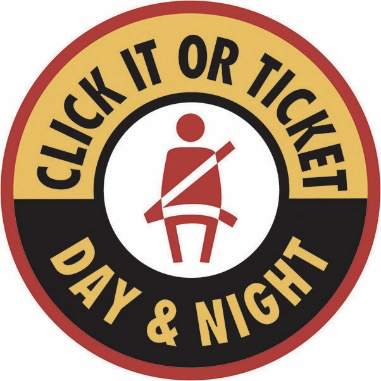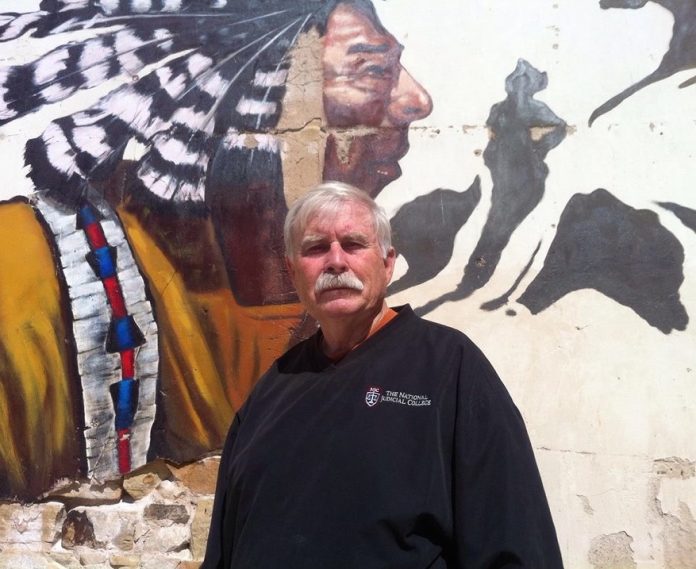Police Stepping Up Seat Belt Enforcement In November
The Click It or Ticket campaign runs from Nov. 9-29
Evansville, In —  The Evansville Police Department will be increasing seat belt enforcement patrols now through the end of November as part of the national Click It or Ticket mobilization. The department will be joined by more than 250 law enforcement agencies around the state that will be working overtime to reduce motor vehicle deaths and injuries in Indiana.
The patrols are supported with the National Highway Traffic Safety Administration funds provided by the Indiana Criminal Justice Institute.
“Over the years, we’ve had a number of incidents where someone wasn’t wearing their seat belt and was either injured or ejected that could have been prevented,†said Lt. Paul Kirby. “Buckling up matters. It saves lives and is your best defense against injury or death. Don’t skip this simple step and pay for it later.â€
Last year, out of the total number of motorists involved in passenger vehicle crashes, 90 percent were wearing a seat belt. Despite this, unrestrained motorists accounted for over half of all vehicle fatalities in 2019 (308 out of 565), according to data from the criminal justice institute.
Drivers under the age 34, particularly young male drivers, were more likely to be found not wearing a seat belt. Additionally, individuals not buckled up in crashes were three times more likely to get injured when the driver was speeding and seven times more likely when the driver was impaired.
Indiana has a primary seat belt law, which allows law enforcement officers to stop and cite drivers and passengers for failing to wear a seat belt. Drivers can also be cited for each unbuckled passenger under the age of 16.
“Every time you go somewhere in a vehicle, whether you’re a driver or passenger, you should always wear a seat belt,†said Devon McDonald, ICJI Executive Director. “Not only is it the law, but it’s the single most effective thing you can do to protect yourself on the road.â€
When it comes to seat belt safety, the department recommends making sure the lap belt is properly secured across the hip and pelvis, below the stomach. The shoulder belt should be positioned across the middle of the chest and away from the neck – never behind the back or under an arm.
If the seat belt doesn’t fit, or the car is older and only has lap belts, ask the car dealer or vehicle manufacturer about seat belt adjusters, extenders or retrofits.
Additionally, children under eight must be properly restrained in a federally approved child or booster seat. Parents and caregivers can choose the safest car seat for their child by visiting TheRightSeat.com, or to find a certified Child Passenger Safety Technician, who can inspect and assist with the installation of a car seat, visit www.childseat.in.gov.
To learn more about the Evansville Police Department, please visit: www.evansvillepolice.com.
Nation, Indiana See Record Number Of Newly-Reported COVID-19 Cases
Nation, Indiana See Record Number Of Newly-Reported COVID-19 Cases
By Taylor WootenÂ
TheStatehouseFile.com
INDIANAPOLIS — The United States hit a high of 107,872 cases of COVID-19 in a single day with Indiana reporting a record 4,462 new cases Thursday for a total of 196,176 since the beginning of the pandemic.
Forty-five new deaths were reported in the state Thursday, bringing the total deaths to 4,269. There have been 1,616 new deaths across the nation in the same time period.
Fountain, Dubois and Fayette counties are being hit especially hard by the disease. On the Indiana State Department of Health COVID-19 dashboard, the counties appear in red to represent high community spread. The only remaining Indiana county with low community spread is Brown County, which appears in blue.
Long-term care facilities are being hit especially hard by the virus because of the vulnerability of the populations they serve. The long-term care dashboard on the ISDH site shows that 68% of COVID-19 deaths at the facilities are of residents over the age of 80.
The spread of the disease is so severe that the National Guard has been deployed to assist in 149 long-term care facilities across the state. The second wave of National Guard members will deploy next week. At the facilities, they will assist staff by providing support in testing, screening and spread prevention.
Wednesday, one day after cruising to a second term, Gov. Eric Holcomb hosted another virtual COVID-19 press conference where he dispelled rumors as false that he intended to impose new restrictions, such as issuing a stay-at-home order and closing schools because of the rising numbers.
Holcomb has been adamant that Indiana has the research and the resources to fight the disease, and further restrictions will not reduce the spread because contact tracing has shown cases are mostly from small gatherings. Holcomb also emphasized that his administration’s decisions for control of the disease are not politically motivated.
“The only campaign that we’re running here is a campaign to try and save lives,†Holcomb said.
The spike follows the general election where during early voting Hoosiers waited in several-hour-long lines in areas of Marion County and across the state, and Halloween, for which the Center for Disease Control and Prevention released safety guidelines.
Prior to Halloween, Indianapolis Mayor Joe Hogsett discouraged typical holiday activities like trick or treating, parties and haunted houses.
It takes up to two weeks to develop symptoms and the rate for false negatives is higher when a person is first infected with COVID-19, according to Harvard Medical School, and as a result it is uncertain how many new cases can be traced back to Halloween or lines at polling locations.
FOOTNOTE: Taylor Wooten is a reporter for TheStatehouseFile.com, a news website powered by Franklin College students.
UE Celebrates First-Generation College Students
Sunday, November 8 marks the third annual First-Generation College Celebration, created in 2017 by the Council for Opportunity for Education (COE) and Center for First-generation Student Success. The University of Evansville (UE) will join colleges and universities across the nation in celebrating this significant awareness day.
Since its founding 166 years ago, the University has strived to create an atmosphere for success as well as a home away from home for first-generation, or “first-gen”, college students. This particular group of students may have faced challenges in the college search, balancing academic coursework, and navigating everyday life in higher education. With personal constant support from faculty and staff, as well as various initiatives instituted by the University, students can successfully earn a college degree and develop lasting skills and talents for the future. This year, approximately 15 percent of UE’s full-time undergraduates are first-generation college students.
When enrolling at UE, all first-generation college students are encouraged to take a special course designed for this group. The class covers a variety of beneficial topics, including career and major exploration, time management, study skills, stress management, study abroad programs, and financial aid opportunities. A Student Success Lab is also available to help students meet their academic goals. Students who utilize this lab have access to supplemental instruction, academic coaches, career development, library services, and more. Services are also available to help choose the area of study best suited to their skills and interests.
“My parents have been so supportive during my college journey, but they weren’t able to provide me with this guidance when it came to filling out applications and researching schools,” said Kimberly Zamora, an exercise science student from Round Lake, Illinois. “I have found a great support system at UE that has made the transition to higher education much easier. For that, I am very grateful and cherish the relationships I have made here.”
Many faculty members of UE have a strong understanding of what these students are experiencing in college because they went through the same process. Over 30 employees at UE are first-generation degree holders.
“To be first-gen means to be a trailblazer,” said Dr. Mari Plikuhn, associate professor of sociology. “You’re seeking new paths that challenge you and exploring where others haven’t gone. As a first-gen faculty member, I want to be a trail guide for these students and help them achieve what might seem impossible to them.”
November 8 marks the 55th anniversary of the signing of the 1965 Higher Education Act, which has helped millions of low-income students become first-generation students and earn college degrees.
FOOTBALL VS. POLITICS By Jim Redwine
FOOTBALL VS. POLITICS
GAVEL GAMUTÂ By Jim Redwine
Democracy is messy but usually bloodless. Football is sweaty and sometimes painful. Football teams choose representative colors such as black and orange or cream and crimson. American politics are red versus blue. Football teams are led by coaches and financed by taxpayers or fat cats. Political parties are led by politicians and financed by drips and drabs via the internet or fat cats. Football teams have a few stars supported by several Sherpas. I was happy to be one of the Sherpas on the Pawhuska, Oklahoma high school Huskies football team a while ago and enjoyed every minute of it, except for wind sprints of course. I am still enjoying supporting the Huskies team which is undefeated and on their way to what I hope will be Pawhuska’s first state championship in football.
Political parties have a few stars supported by, usually, faceless minions. Football teams have one mission, to win, whoever the opponent is. Political parties believe their mission is to provide better government than competing political parties would provide. I will leave it up to you, Gentle Reader, if you believe any political party manages to achieve this goal.
Both football teams and political parties are governed by rules of procedure and conduct. With football teams a conference sets the standards and with political parties governments from the local level on up to the top have a hand in determining policy and ultimate victory. Football games are controlled by officials on the field who can enforce the rules. Their rulings are immediate and not subject to appeal but some can be reviewed. Albeit the final ruling, in effect, is made by the same people who made the initial one. Political races are governed by laws and can be subject to recount, review, repeal and reversal. Football fans sometimes must just grimace and bear a referee’s egregious error, such as giving one team an extra down as in the 1990 Colorado v. Missouri game. Of course, the problem with any attempted remedy in football is it would be impossible to completely and fairly recreate the original game circumstance. On the other hand there is the benefit that, other than endless conversations over beer, the calls at football games are final. But political races such as Bush v. Gore in 2000 may end up in the U.S. Supreme Court and may never be universally accepted as final.
As for me, I am currently marveling how my alma mater, Indiana University, can be undefeated in football after many years of wandering in the football wilderness. This column was written before Michigan v. I.U. upcoming on November 7, 2020, so I am hopeful it remains valid when you read this. And I am chagrined that Oklahoma State University where I started college could have lost to Texas last Saturday. I want a recount! I know I personally saw several blown calls that might have changed the score of the Cowboy game.
Regardless, what I have decided after suffering through the entire 2020 political season and cheering (or moaning) my way along the football season is that the temporary pains that I experienced playing football pale in the excruciation caused by the clanging brass of competing political parties and noxious news anchors. I am thankful for football and am past caring about the motes in the eyes of those who do not see eye to eye with me on politics.
For more Gavel Gamut articles go to www.jamesmredwine.com
Or “Like/Follow†us on Facebook & Twitter at JPegRanchBooks&Knitting
HOT JOBS IN EVANSVILLE
|
|||||||||||||||||||||||||||||||||||||||||||||||||||||||||||||||||||||||||||||||||||||||||||||||||||||||||||||||||||||||||||||||||||||||||||||||||||||||||
|
AG Curtis Hill: ‘We have won our case against Wildlife in Need’
Attorney General Curtis Hill said today that a court’s default judgment against Wildlife in Need should demonstrate to all nonprofit organizations that they must use donations for their intended purposes and cannot misrepresent their activities to would-be donors.
This week, a Marion Superior Court judge affirmed that the state’s allegations against Wildlife in Need are correct and ruled that the organization is now officially dissolved.
“We have won our case against Wildlife in Need,†Attorney General Hill said. “From here, we must look to appropriately deal with assets that were held by the organization and tend to other related matters, but we are pleased with the dissolution of the nonprofit corporation and the court’s resolution of the central issues of this case.â€
Attorney General Hill sued Wildlife in Need in February over owner Timothy Stark’s misrepresentations of the nonprofit organization’s activities. He alleged that for years, Stark embezzled the nonprofit’s assets for his own purposes. The lawsuit sought the return of those embezzled assets and Wildlife in Need’s dissolution.
In September, authorities from the Office of the Attorney General oversaw the removal of approximately 161 animals from Wildlife in Need’s Charlestown property. That same month, the organization’s board of directors voted to dissolve it. On Oct. 27, the board filed dissolution documents with the state.
During the removal of animals, authorities discovered that approximately $165,000 worth of previously seen animals were missing from the Wildlife in Need premises. Some of those animals were later found, but others remain missing.
A judge later found Stark in contempt of court for defying a court order that he reveal the location of the missing animals. A warrant for Stark was subsequently issued. Stark was arrested last month in Washington County, New York, which is located more than 800 miles northeast of the Wildlife in Need property. This week, the judge ordered that Stark serve 10 days in jail for his actions in this case.
Stark also faces felony intimidation and misdemeanor battery charges in Clark County. Those charges stem from a March incident involving an Indiana deputy attorney general who was inspecting the Wildlife In Need property.
Construction continues at EVPL East
EVPL News | November 2020
October 24, 2020, Hoosiers participated in the 19th nationwide “Prescription Drug Take Back Day” by visiting Indiana State Police Posts, locations sponsored by the Indiana Professional Licensing Agency (IPLA) and the Indiana Board of Pharmacy, and other sites across the state.
“Prescription Drug Take Back Day is the perfect opportunity for Hoosiers to clean out their medicine cabinets and safely dispose of any unused medication,†said Indiana Executive Director for Drug Prevention, Treatment and Enforcement Douglas Huntsinger. “No matter if it’s one prescription or 10, each prescription we properly dispose of makes Indiana’s communities safer places for all.â€
In partnership with the federal Drug Enforcement Administration (DEA), the drug take back initiative seeks to prevent prescription drug abuse and theft through proper disposal of prescription drugs.
During the one-day event, the DEA reports that Hoosiers safely disposed of more than 39,000 pounds of unused medication. Collectively the Indiana State Police received 2,130 pounds of unused, expired or unwanted medications for proper disposal. Our partners from the IPLA and the Indiana Board of Pharmacy received 1,194 pounds of prescription medications.
For more information about the bi-annual “Prescription Drug Take Back Day” or to find year round disposal locations visit https://takebackday.dea.gov/.















